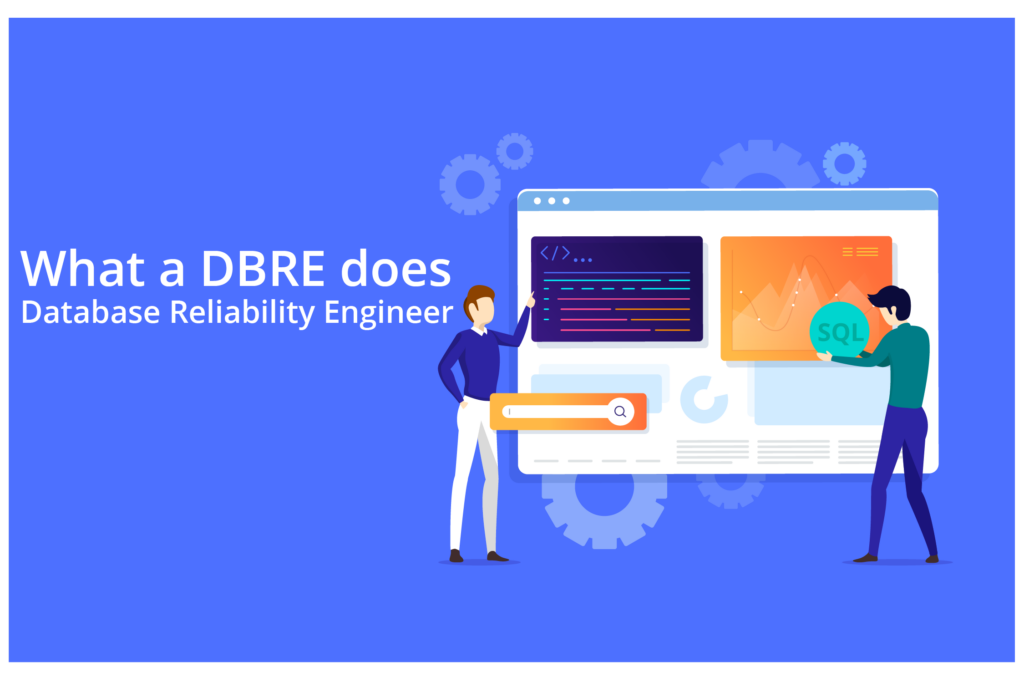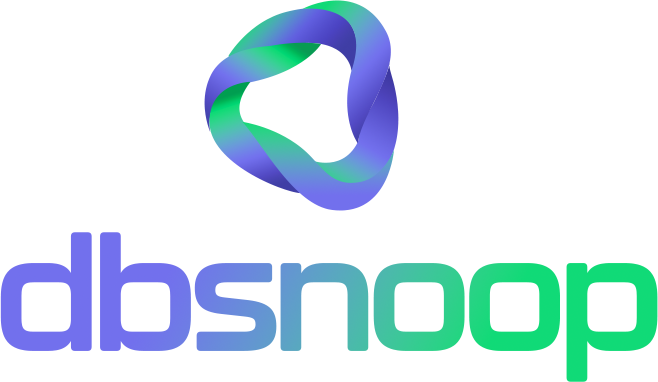

For decades, the figure of the Database Administrator (DBA) has been the pillar of corporate data stability. In a world of on-premises infrastructure, physical servers, and monolithic deployment cycles, the DBA was the guardian of the fort: provisioning hardware, applying patches, managing backups, and reactively optimizing queries. This model worked for a long time. Today, it is broken. The rise of the cloud, microservices architectures, and DevOps practices has shattered the old paradigm. Infrastructure is no longer hardware; it is API.
Deployments are no longer quarterly; they are daily. In this new scenario, the manual and reactive approach of the traditional DBA does not scale; it becomes a bottleneck for business agility. It is in this vacuum that a new discipline emerges, a direct evolution: the Database Reliability Engineer (DBRE). The DBRE is not just a new title for the DBA. It is a fundamental redefinition of the role, applying the principles of Site Reliability Engineering (SRE) to the data layer. This article technically details what a DBRE does, how they differ from a classic DBA, and what tools, especially observability platforms, enable this new critical function.
The Traditional DBA: The Reactive Guardian of the Fort
To understand the DBRE, we first need to revisit the role of the classic DBA. The traditional DBA operates with a systems administration mindset. Their primary responsibilities are reactive and focused on the health of the database “box”:
- Provisioning and Maintenance: Installing, configuring, and applying patches to the database software. Planning hardware capacity (CPU, RAM, disk).
- Backups and Recovery: Ensuring that backups are executed successfully and being able to restore the database in case of a disaster.
- Security: Managing users, permissions, and grants, ensuring that only authorized people have access to the data.
- Reactive Performance Tuning: When an application becomes slow, the development team “throws the problem over the wall” to the DBA. They then connect to the server, run a series of manual scripts (sp_who2, EXPLAIN, etc.) to find the offending query, and often suggest the creation of an index. Their interaction with the development team is often transactional and ticket-based.
The traditional DBA measures their success in infrastructure metrics: server uptime, disk latency, backup success. They are the expert in a silo, the guardian of the database. In an agile environment, this silo becomes an obstacle.
The Emergence of the DBRE: Treating Data Persistence as a Software Problem
The Database Reliability Engineer (DBRE) emerges from the same philosophy that created the SRE at Google: the idea that operations problems can be solved with a software engineering mindset. The DBRE treats the data layer not as a “box” to be administered, but as a distributed service whose reliability must be designed, automated, and measured.
The responsibilities of a DBRE are proactive and focused on the reliability of the data service as a whole, not just the server.
1. Define and Manage SLOs, SLIs, and Error Budgets
This is the most fundamental difference. A DBA promises “high availability.” A DBRE quantifies it. They work with the product and development teams to define clear and measurable Service Level Objectives (SLOs) for the data layer.
- Service Level Indicator (SLI): The actual metric. Ex: the 99th percentile (p99) latency of the login query.
- Service Level Objective (SLO): The target for the SLI. Ex: “99.9% of login queries must execute in under 150ms.”
- Error Budget: The allowed margin of error. If the SLO is 99.9%, the error budget is 0.1%. This means that, in a month, 43 minutes of latency above 150ms are “allowed.”
The error budget becomes the currency for decision-making. If the budget is almost intact, the team has the freedom to deploy new features. If the budget has been consumed by performance incidents, the development team’s focus must shift from new features to stabilization projects, by mutual agreement. The DBRE is the guardian of these SLOs.
2. Automate Everything (Eliminate “Toil”)
SRE defines “toil” as manual, repetitive, reactive work that lacks long-term value. The traditional work of a DBA is, in large part, “toil.” The primary mission of a DBRE is to automate themselves out of their traditional job.
- Provisioning and Schema: Instead of configuring a database manually, a DBRE uses Infrastructure as Code (IaC) tools like Terraform to provision and configure databases in a repeatable and auditable way.
- Schema Migrations: Instead of running DDL scripts manually in a maintenance window, a DBRE integrates tools like Flyway or Liquibase into the CI/CD pipeline to automate schema migrations.
- Common Operations: Tasks like failover, replica management, and even the application of a recommended index should be scripted and automated. The goal is that no operation needs to be done manually more than once.
3. Focus on Proactive Engineering, Not Reactive Administration
With automation taking care of the “toil,” the DBRE’s time is freed up for high-value engineering work.
- Predictive Performance Analysis: Instead of waiting for an alert, the DBRE analyzes trends to predict bottlenecks. They can detect that a table is growing at a rate that will make it slow in three months and proactively plan a partitioning strategy.
- Scalability Architecture: The DBRE collaborates on the design of new systems, helping developers choose the right persistence technology (SQL? NoSQL?), model the data for performance, and design for high availability and resilience.
- “Shift-Left”: The DBRE doesn’t wait for the problem to reach production. They work alongside developers, reviewing data access code, teaching best practices for writing queries, and, crucially, integrating performance analysis tools into the CI/CD pipeline to block regressions before they are merged.

The DBRE’s Toolbox: From Manual Scripts to Observability Platforms
The change in responsibilities requires a complete change of tools. The DBRE swaps Bash scripts and administration GUIs for an arsenal of automation and data analysis tools.
The Foundation: Automation and IaC
- Infrastructure as Code: Terraform and Ansible are essential. The DBRE doesn’t click in a console to create a database; they write code that defines the desired state of the data infrastructure.
- CI/CD: Jenkins, GitLab CI, GitHub Actions. The DBRE is a first-class citizen of the deployment pipeline, integrating their database scripts and tests directly into the software delivery workflow.
- Containers and Orchestration: Docker and Kubernetes. Increasingly, databases are being run in containers, and the DBRE needs to master the art of managing persistence in an orchestrated environment.
The Brain of the Operation: The Observability Platform
Of all the tools, the most critical for a DBRE’s success is the observability platform. It is impossible to manage SLOs, diagnose complex problems quickly (reduce MTTR), and do proactive engineering without a deep and contextualized view of the database workload. This is where a tool like dbsnOOp becomes the DBRE’s central control panel.
- Visibility for SLOs: To manage a query latency SLO, you need to measure the latency of every query. Traditional monitoring tools that use sampling or only log slow queries are useless for this. dbsnOOp captures 100% of the workload, providing the precise SLIs needed to manage SLOs and the error budget.
- Root Cause Diagnosis in Seconds: The main goal of an SRE/DBRE during an incident is to reduce the Mean Time to Resolution. dbsnOOp was designed for this. When a latency alert triggers, the DBRE doesn’t need to connect to the server and run scripts. They open dbsnOOp and immediately see:
- The Total Load (DB Time): Understands right away if the problem is CPU or wait-related.
- The Culprit Queries: Sees the ranking of the queries that contribute the most to the load.
- The Problematic Execution Plan: Analyzes the offending query’s plan and sees the Table Scan operation.
- The Recommended Solution: Receives the recommendation for the exact index to solve the problem.
The diagnosis that would take a traditional DBA an hour is done in minutes by a DBRE equipped with the right tool.
- Enabler of Proactive Optimization: dbsnOOp stores historical performance data, allowing the DBRE to analyze trends. They can easily see how a query’s performance changed after a deployment or how the load on a table is growing over time. They can identify unused indexes that are penalizing writes and safely remove them. This historical view is what allows the DBRE to move from reactive to proactive mode.
A Direct Comparison: DBA vs. DBRE
| Activity | Traditional DBA (Reactive) | Database Reliability Engineer (Proactive) |
| Database Creation | Manual, following a checklist. | Automated via Terraform/IaC. |
| Performance | Waits for a “slow query” ticket. Analyzes manually. | Monitors SLOs. Uses observability to detect anomalies. |
| Schema Deployment | Executes DDL scripts in maintenance windows. | Integrates migrations into the CI/CD pipeline. |
| Crisis Resolution | Focus on restoring the service (restarting, etc.). | Focus on reducing MTTR with fast diagnosis and post-mortems. |
| Success Metric | Server uptime. | Adherence to SLOs and reduction of “toil.” |
| Interaction | Siloed. Receives tickets from engineering. | Integrated. Collaborates with engineering throughout the lifecycle. |
| Main Tool | Administration GUI, SQL Scripts. | Observability Platform, IaC, CI/CD. |
The Necessary Evolution for the Cloud Era
The Database Reliability Engineer is not the end of the DBA; it is their necessary evolution. They take the deep domain knowledge that a DBA has about the inner workings of a database and combine it with the software engineering, automation, and measurement mindset of an SRE. In a world where agility and reliability are the currencies of competitiveness, organizations can no longer afford to treat the data layer as a reactively managed black box.
The DBRE, empowered by observability platforms that provide the visibility needed for proactive engineering, is the answer to building data systems that are not only stable but also fast, efficient, and capable of scaling at the speed of business.
Want to empower your team with the right tools for database reliability engineering? Schedule a meeting with our specialist or watch a live demo!
To schedule a conversation with one of our specialists, visit our website. If you prefer to see the tool in action, watch a free demo. Stay up to date with our tips and news by following our YouTube channel and our LinkedIn page.
Schedule a demo here.
Learn more about dbsnOOp!
Learn about database monitoring with advanced tools here.
Visit our YouTube channel to learn about the platform and watch tutorials.

Recommended Reading
- How dbsnOOp ensures your business never stops: This article explores the concept of business continuity from the perspective of proactive observability. Learn how predictive anomaly detection and root cause analysis allow engineering teams to prevent performance incidents before they impact the operation, ensuring the high availability of critical systems.
- Industry 4.0 and AI: The Database Performance Challenge and the Importance of Observability: Explore how the demands of Industry 4.0, IoT, and Artificial Intelligence are raising the complexity and volume of data to new heights. This article discusses why legacy monitoring tools are insufficient in this new scenario and how observability becomes crucial to ensure the performance and scalability needed for innovation.
- Performance Tuning: how to increase speed without spending more on hardware: Before approving an instance upgrade, it is crucial to exhaust software optimizations. This guide focuses on performance tuning techniques that allow you to extract the maximum performance from your current environment, solving the root cause of slowness in queries and indexes, instead of just remedying the symptoms with more expensive hardware.

